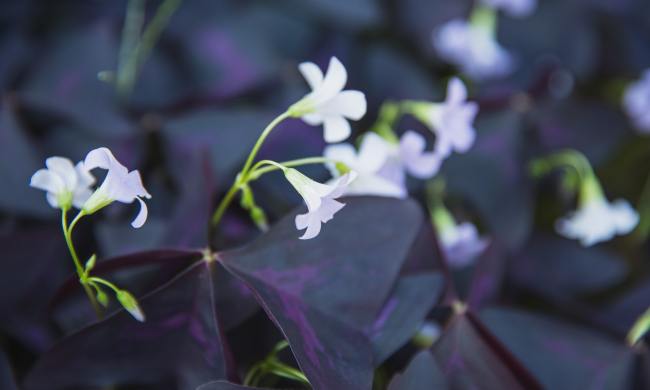The kalanchoe plant, also known as the Flaming Katy, is a low-maintenance, beginner-friendly blooming succulent native to Madagascar and tropical Africa. This plant features large, glossy, medium-green leaves and blooms that come in shades of pink, yellow, red, orange, and white. It stays relatively small and grows well in container gardens.
The kalanchoe can be found practically anywhere plants are sold. This ubiquitous availability, paired with its easy care and beautiful flowers, makes it an incredibly popular houseplant. Thinking about adding one to your home or succulent garden? In this handy how-to guide, we'll cover the most common questions new plant parents have about kalanchoe care indoors to help you get started on growing your own.
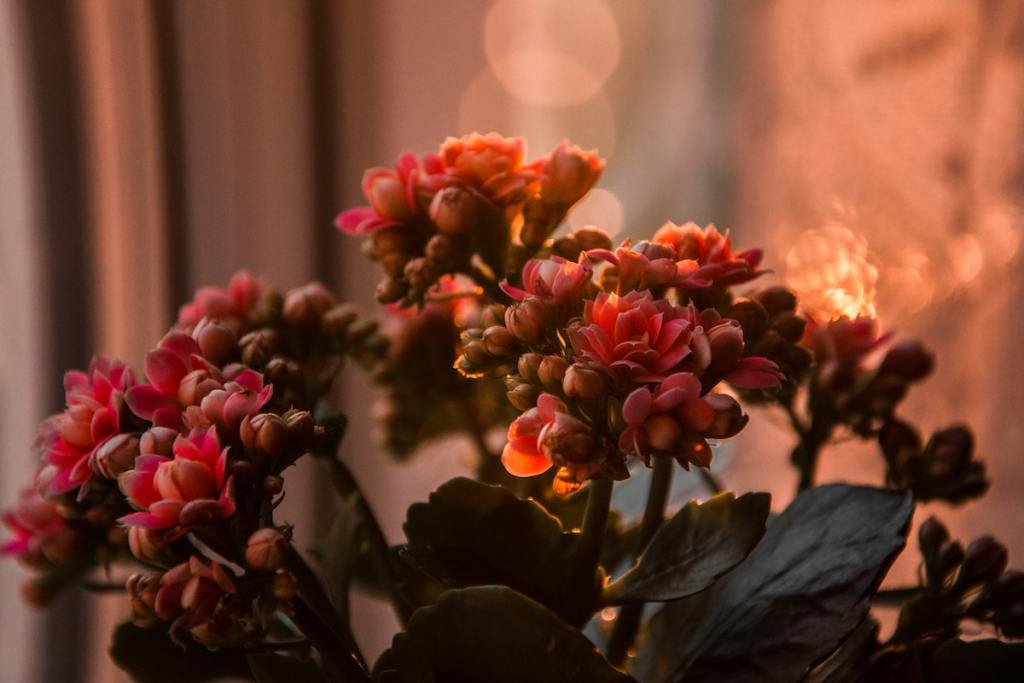
Do kalanchoe plants do well indoors?
Kalanchoes are mainly indoor plants grown in pots, so they do really well in typical indoor conditions — so well, in fact, that they even produce the cutest little flowers when provided with the right amount of light, water, and fertilizer.
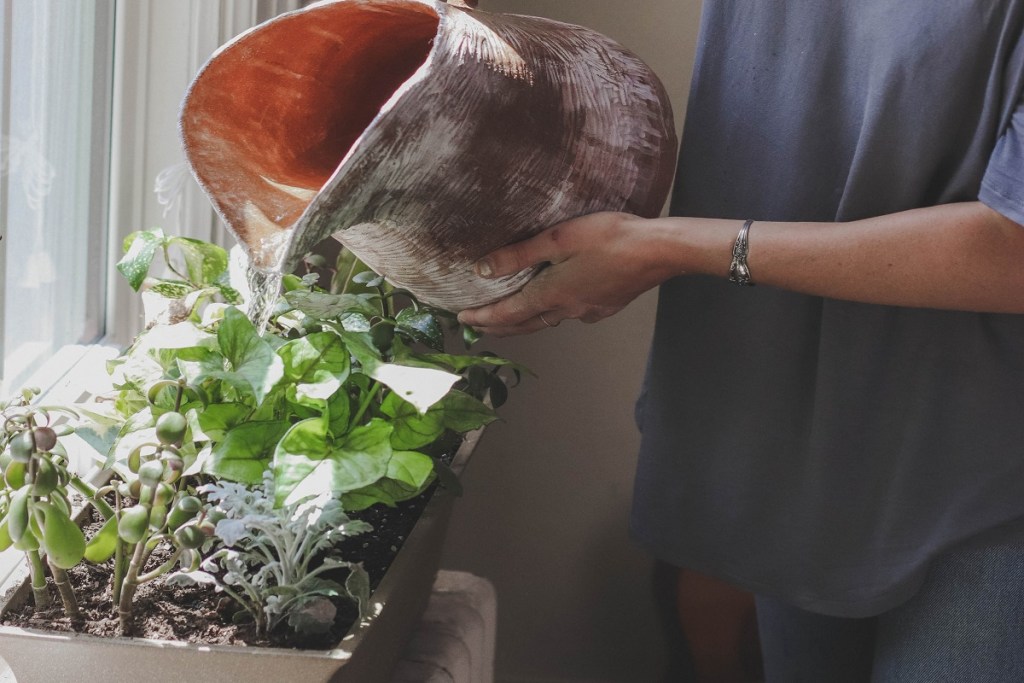
How often do you water a flowering kalanchoe plant?
Because kalanchoes are succulents, they don’t like constantly moist soil. However, when they’re flowering, kalanchoe plants need more water than usual to produce healthy blooms.
Step 1: Provide your plant with well-draining soil or a specialty succulent mix.
Step 2: Use a moisture meter to measure the amount of moisture in the soil more accurately.
That way, you’ll avoid overwatering or underwatering the plant.
Step 3: Avoid getting water on the leaves, and gently shake or wipe off any excess water you see pooling on the leaves.
The leaves of these plants are more sensitive to rot or blemishes if water sits on them for too long.
Step 4: Consider bottom watering your plant.
This is when you use a bucket or bowl of water and place the potted plant in it. The plant will then suck up all the water it needs, so you completely avoid the risk of getting water on the leaves.
Step 5: Allow your plant to stop dripping before putting it back on its tray.
This prevents the plant from sitting in the water and developing root rot.
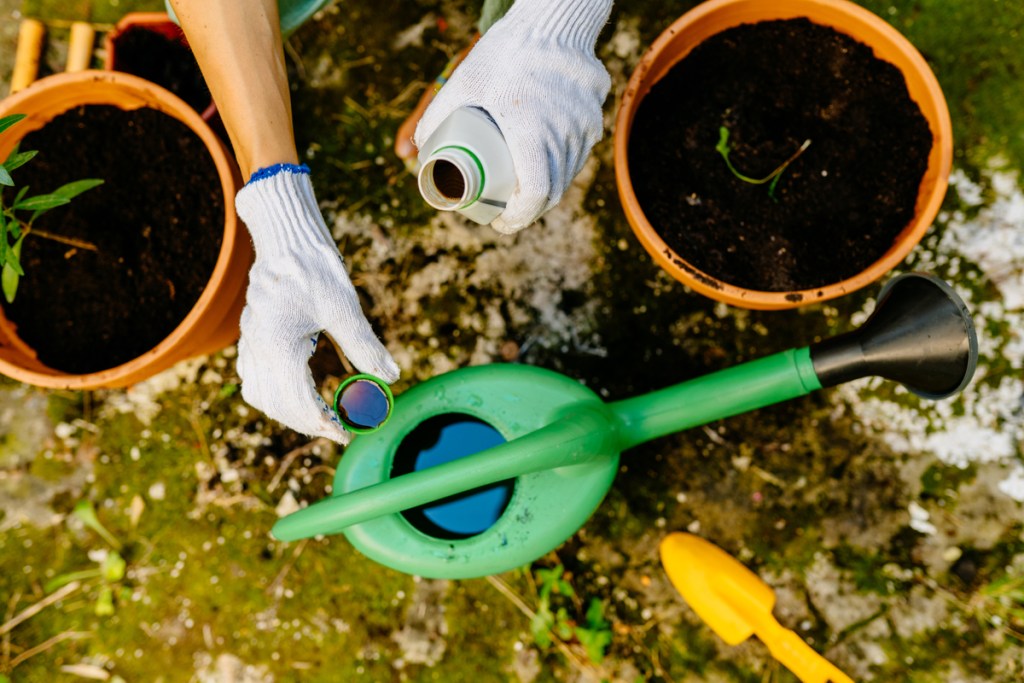
Do I need to feed a blooming kalanchoe plant?
Kalanchoes do not need heavy fertilizing, but they do benefit from occasional feeding. If you’re looking for prolific blooms, then here's the ideal schedule:
Step 1: Begin feeding your kalanchoe plant around late winter or early spring, just before it blooms.
Step 2: Fertilize it once a month through spring and summer while it is blooming.
Step 3: Use a liquid organic fertilizer.

Should I deadhead the blooms on a kalanchoe?
Yes! Not all plants do well with deadheading, but the kalanchoe plant will produce more lovely flowers if you deadhead the blooms as they wither away. Doing this allows the plant to direct its energy towards making healthy flowers rather than wasting it on dying blooms. Deadheading would occur naturally with animals, insects, and weather in an outdoor habitat. However, you have to cut blooms yourself when the plant is indoors and under your protection.
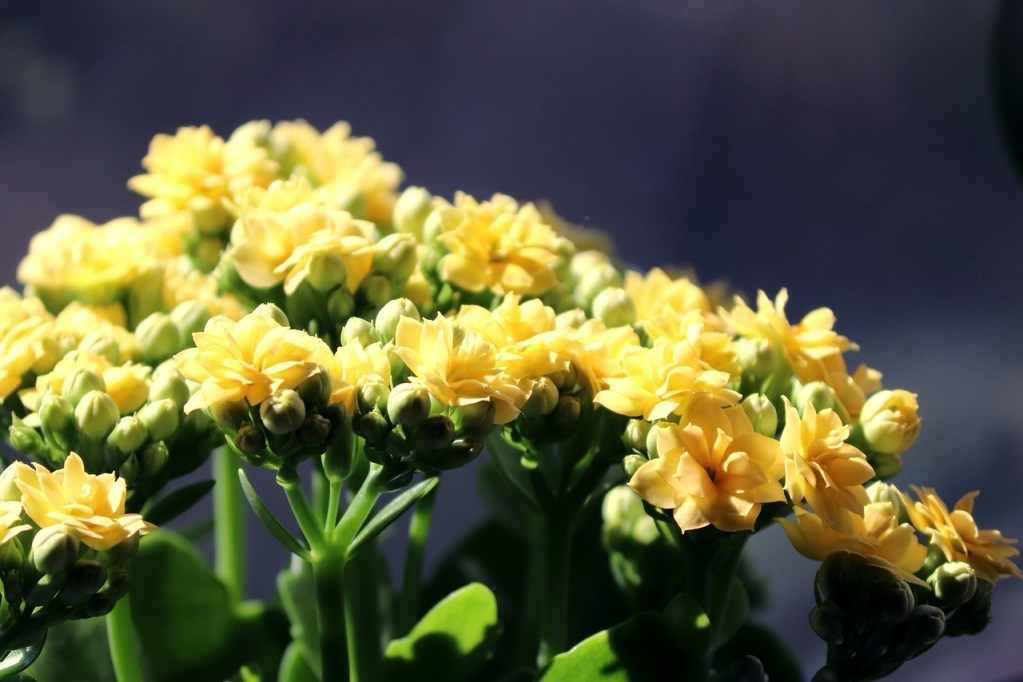
Do kalanchoes need direct sunlight?
Kalanchoe plants need plenty of light, but they don't thrive in direct light. Here's how to make sure your kalanchoe is getting the right kind of light:
Step 1: Place the plant near a window that gets bright morning sun and then more shade during the brutal afternoon sun.
This is the perfect place for a kalanchoe plant. Too much direct sunlight will result in burnt leaves and flowers, and it might even kill the plant.
Step 2: Keep your plant out of direct sunlight for long periods while it is blooming, and be extra careful with harsh afternoon sun.
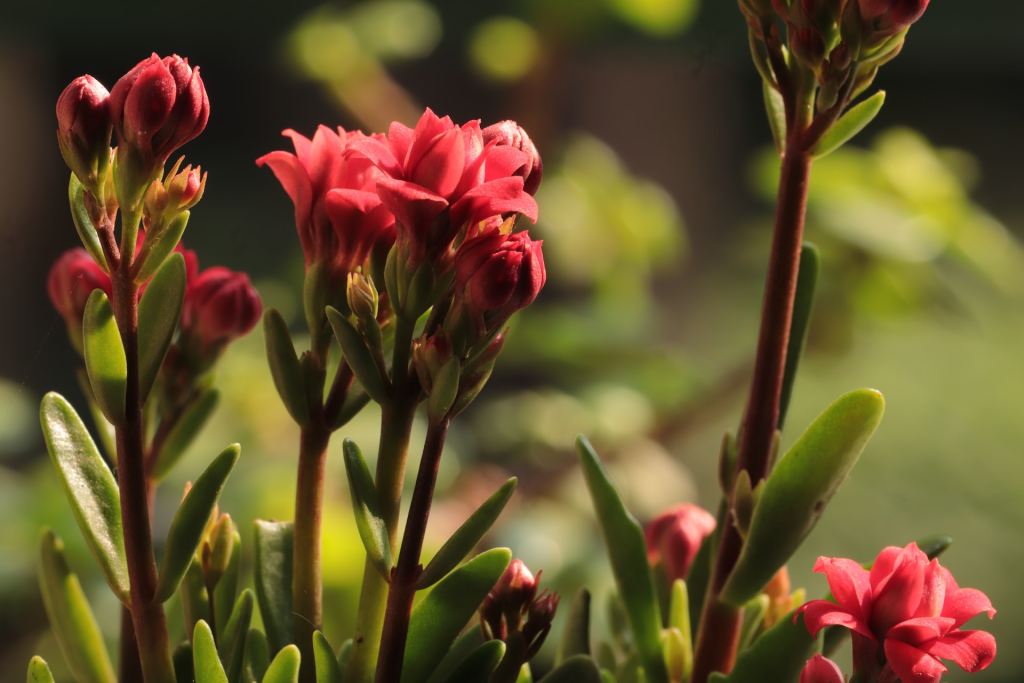
When do kalanchoes bloom?
When you find kalanchoe plants in nurseries during the holidays, there's a good chance that they've been forced to bloom. If you were to find a kalanchoe in its native environment, it'll probably be blooming throughout the year. Houseplant kalanchoes will bloom according to the amount of light that they receive, and they typically need six weeks of winter light levels, which will act as a rest period for them.
Generally, kalanchoes will flower around late winter or early spring, but an indoor plant may flower sooner or later than that time frame. As the amount of light goes up, flowers will be slower to appear.
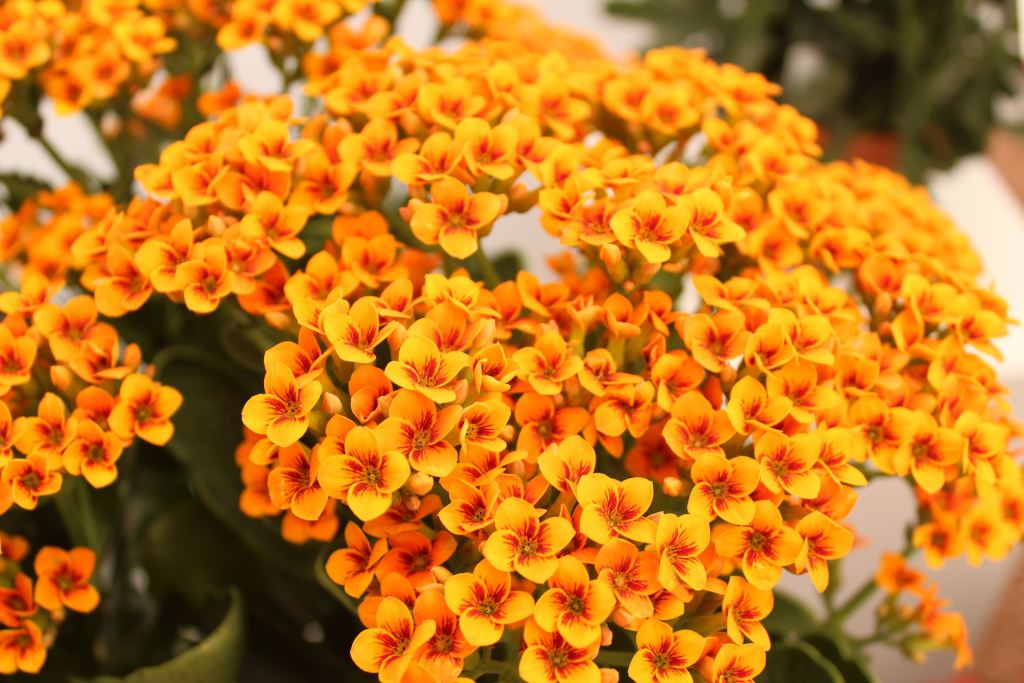
How do I encourage a kalanchoe to bloom again?
You’ll need to convince the plant that it’s going through a winter season to do this. This means exposing it to less light and giving it “shorter” days.
Step 1: Water the plant less — or maybe even stop watering — and move it to a location where it won’t get as much sun for about a month.
During this month, your kalanchoe should only be getting 8 to 9 hours of light per day.
Step 2: Move the kalanchoe to a closet (or other area in complete darkness) after a few weeks of decreased sun and water.
Step 3: Move the kalanchoe back into sunlight once flower buds begin appearing.
Typically, this is after about a month of darkness.
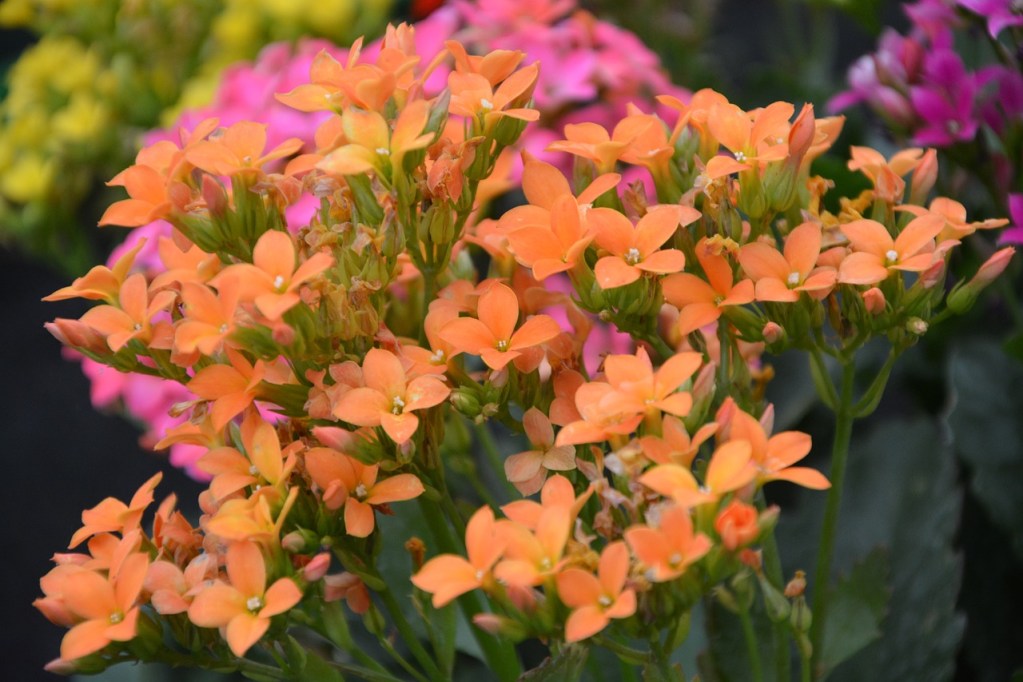
How long do kalanchoe plants live?
With proper kalanchoe care indoors, your plant can live up to seven or eight years! However, there are issues you can start to see as your kalanchoe ages. Older kalanchoe plants tend to become leggy, especially if they are indoors. Supplementing regular sunlight with a grow light can help ensure its needs are being met.
Potted kalanchoe can sometimes suffer from a buildup of salts in the soil, which comes from repeated fertilization. Repotting your kalanchoe with fresh soil once every year to every other year eliminates this issue.
Kalanchoe plants make a lovely addition to the home, and it’s essential to give them the proper care to help them last as long as possible. Be sure to use what you’ve learned here to keep your plant happy and healthy, and then just sit back and enjoy the blooms!


